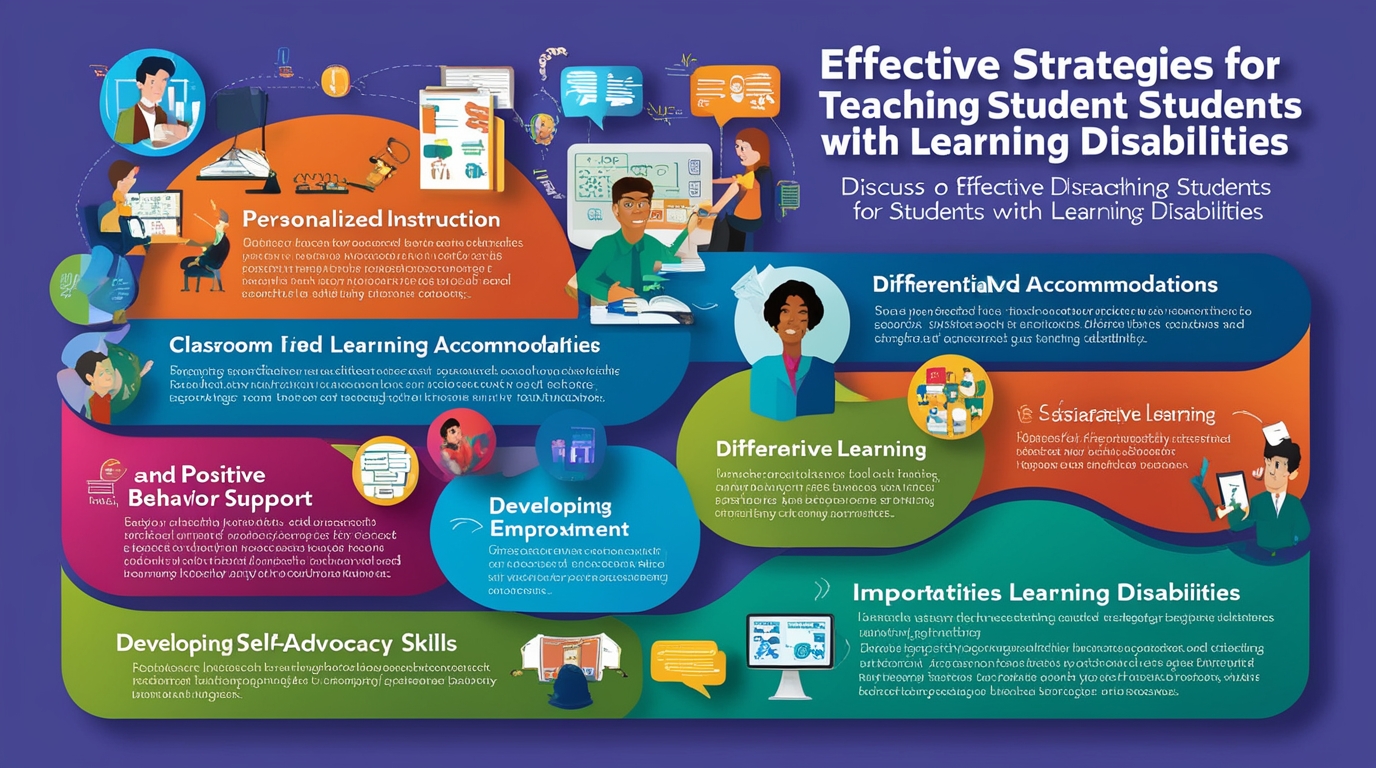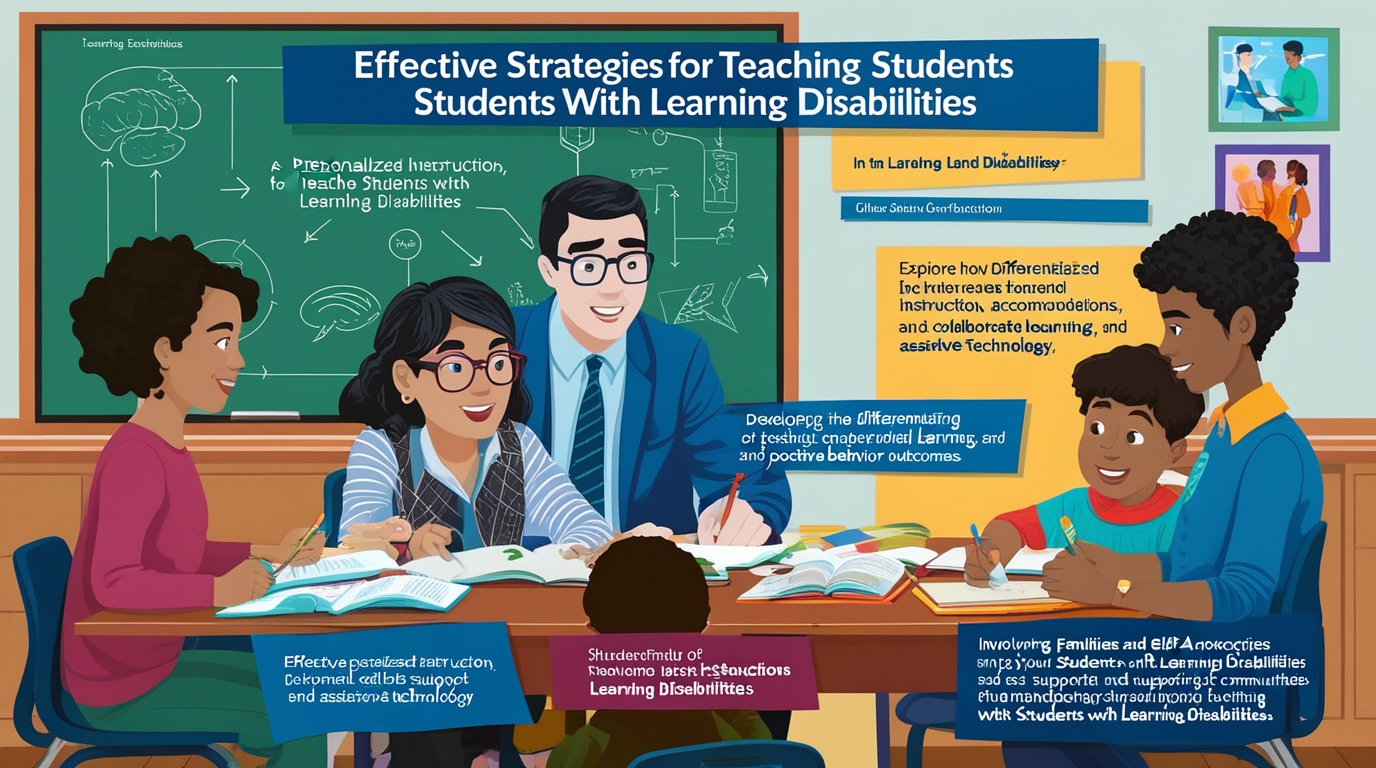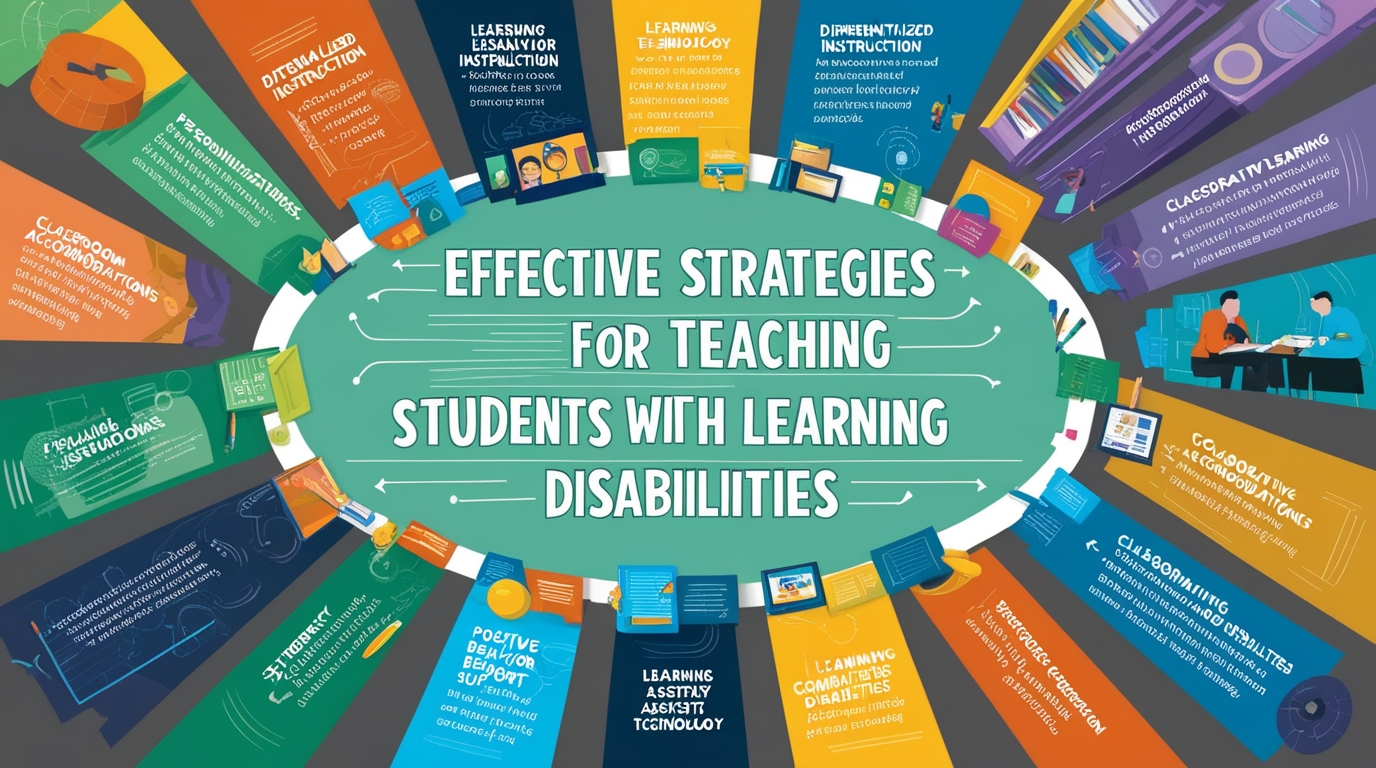Effective Strategies for Teaching Students with Learning Disabilities Learning disabilities (LDs) encompass a range of neurological disorders that affect a student’s ability to read, write, spell, reason, or perform mathematical calculations. These disabilities are not indicative of low intelligence but reflect differences in how individuals process information. As education evolves to accommodate diverse learning needs, understanding effective strategies for teaching students with learning disabilities becomes essential. This article explores evidence-based approaches to support students with LDs, focusing on personalized instruction, classroom accommodations, technology integration, and collaborative efforts.
1. Understanding Learning Disabilities
Learning disabilities are often categorized into specific types, including dyslexia (reading difficulties), dyscalculia (math difficulties), dysgraphia (writing difficulties), and auditory or visual processing disorders. These conditions can significantly impact a student’s academic performance and self-esteem if not properly addressed. Teachers must first understand the nature of these disabilities and recognize that each student’s experience is unique. Early identification and intervention are crucial for providing appropriate support.
Understanding the individual needs of students with learning disabilities involves comprehensive assessments and collaboration with specialists, such as educational psychologists and special education teachers. These assessments help in creating tailored educational plans that address each student’s specific challenges and strengths.
2. Differentiated Instruction
Differentiated instruction is a teaching approach that involves adjusting the content, process, and products of learning to meet the diverse needs of students. For students with learning disabilities, differentiated instruction allows for personalized learning experiences that cater to their unique learning styles and paces. Strategies include using visual aids, simplifying instructions, providing step-by-step guidance, and offering multiple means of engagement.
For example, in a reading lesson, a teacher might use audiobooks or text-to-speech software for a student with dyslexia, while providing written materials for others. By offering various ways to access content, differentiated instruction ensures that students with learning disabilities are not left behind.

3. Classroom Accommodations
Classroom accommodations are adjustments made to the learning environment, teaching methods, or assessments to help students with learning disabilities succeed. Common accommodations include extended time on tests, preferential seating, use of calculators, or alternative formats for assignments (e.g., oral presentations instead of written reports).
Accommodations should be tailored to the specific needs of each student. For instance, a student with dysgraphia might benefit from using a computer for written tasks, while a student with ADHD may need frequent breaks to maintain focus. Teachers should work closely with students and their families to determine which accommodations are most effective.
4. Use of Assistive Technology
Assistive technology plays a pivotal role in supporting students with learning disabilities by providing tools that can help overcome barriers to learning. Examples include speech-to-text software for writing, audio books and text-to-speech programs for reading, and interactive math programs that provide step-by-step problem-solving support.
Technology can also enhance engagement and motivation, making learning more accessible and enjoyable. For example, students with dyscalculia can use apps that turn math problems into interactive games, helping them to practice skills in a fun and non-threatening way.
Integrating technology into the classroom requires careful planning and ongoing support. Teachers need training to effectively use these tools and ensure that they are appropriately matched to each student’s needs.
5. Collaborative Learning and Peer Support
Collaborative learning encourages students to work together, leveraging the strengths of each individual. This approach can be particularly beneficial for students with learning disabilities, as it allows them to learn from their peers in a supportive environment. Group work and peer tutoring can provide opportunities for social interaction, skill development, and confidence building.
In peer tutoring, students with strong skills in a particular area assist those who are struggling. This not only supports the learner but also reinforces the tutor’s knowledge. Teachers can facilitate these interactions by setting clear expectations, providing structure, and monitoring progress.
Collaborative learning should be structured in a way that promotes positive interaction and minimizes potential frustration. Teachers should be mindful of group dynamics and provide guidance to ensure that all students feel valued and included.
6. Developing Self-Advocacy Skills
Teaching students with learning disabilities to advocate for themselves is an essential component of their education. Self-advocacy involves understanding one’s own learning needs, knowing which accommodations are necessary, and effectively communicating those needs to others. Developing these skills empowers students to take an active role in their education and become more independent learners.
Teachers can foster self-advocacy by creating a classroom environment that encourages open communication and respects individual differences. Role-playing, self-reflection exercises, and discussions about learning styles and strategies can help students become more aware of their strengths and challenges.
Encouraging self-advocacy also involves teaching students how to set realistic goals, track their progress, and seek help when needed. This not only prepares them for academic success but also equips them with skills that are valuable in all areas of life.

7. Positive Behavior Support
Students with learning disabilities may also struggle with behavioral challenges that impact their learning. Positive Behavior Support (PBS) is an approach that focuses on understanding the reasons behind behaviors and teaching alternative, more appropriate behaviors. PBS emphasizes proactive strategies, such as setting clear expectations, providing consistent feedback, and reinforcing positive behaviors.
For example, a student with ADHD who has difficulty staying seated might be given a specific, structured break time to move around, paired with clear expectations for when they need to be seated and focused. By addressing the underlying needs rather than just the symptoms, PBS creates a more supportive and effective learning environment.
8. Family and Community Involvement
Family and community involvement are critical in supporting students with learning disabilities. Parents and caregivers play a vital role in reinforcing the strategies used in the classroom and advocating for their child’s needs. Regular communication between teachers and families ensures that everyone is on the same page and working towards the same goals.
Community resources, such as tutoring programs, support groups, and after-school activities, can also provide valuable support. These resources can help students with learning disabilities build skills, gain confidence, and connect with others who share similar experiences.
Conclusion
Teaching students with learning disabilities requires a multifaceted approach that combines understanding, flexibility, and collaboration. By employing differentiated instruction, classroom accommodations, assistive technology, and collaborative learning strategies, educators can create an inclusive environment where all students have the opportunity to succeed. Developing self-advocacy skills and involving families and communities further enhances the support network for students with learning disabilities, helping them to reach their full potential.
References
- Fuchs, D., Fuchs, L. S., & Vaughn, S. (2014). What is intensive intervention and why is it important? Teaching Exceptional Children, 46(4), 13-18.
- Gersten, R., & Baker, S. (2001). Teaching expressive writing to students with learning disabilities: A meta-analysis. The Elementary School Journal, 101(3), 251-272.
- Hallahan, D. P., Kauffman, J. M., & Pullen, P. C. (2012). Exceptional learners: An introduction to special education. Boston: Pearson.
- McLeskey, J., Rosenberg, M. S., & Westling, D. L. (2017). Inclusion: Effective practices for all students. Pearson.
- Rose, D. H., & Meyer, A. (2002). Teaching every student in the digital age: Universal Design for Learning. ASCD.
- Swanson, H. L., Harris, K. R., & Graham, S. (2003). Handbook of learning disabilities. Guilford Press.

4 thoughts on “Effective Strategies for Teaching Students with Learning Disabilities”
Comments are closed.